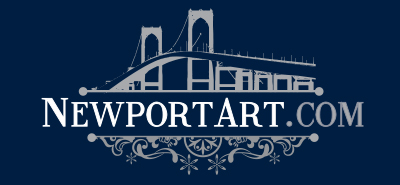
Dickinson was one of the first American artists to focus on industrial subjects. He was working in the Precisionist mode by at least 1915, and his depictions of factories and granaries predate those of fellow Precisionists Charles Sheeler and Charles Demuth. Dickinson was motivated by a reverence for the benefits of technology and industry to humanity, as well as an interest in its formal qualities. Many of his industrial scenes were imaginary (such as Factory (c. 1920), pictured at right), though his work later shifted towards a greater realism. Dickinson also produced many landscapes, depicting the Harlem River at many times during his life, though he was most interested in the cut-stone architecture that lined and crossed the river. He painted numerous still lifes of man-made objects, with table-top settings depicting “simple dining” being a recurring theme.
Experimenting with a variety of techniques and styles, his work showed influence from a number of avant-garde art movements, such as Cubism, Futurism, Fauvism, and Synchromism. His use of color was expressive, showing his influence by the Post-Impressionists and Fauves. His later work, though superficially in a Precisionist style, utilizes off-balance, expressionistic compositions with jagged diagonals. Some of his work in the 1920s was also observed by critics as having an Oriental influence, believed to derive from his studies of Japanese ukiyo-e art.
Dickinson produced fewer than two hundred works during his twenty-year career. He usually did not sign or date his works, which together with his stylistic experimentation makes it difficult to place them in a chronology.
